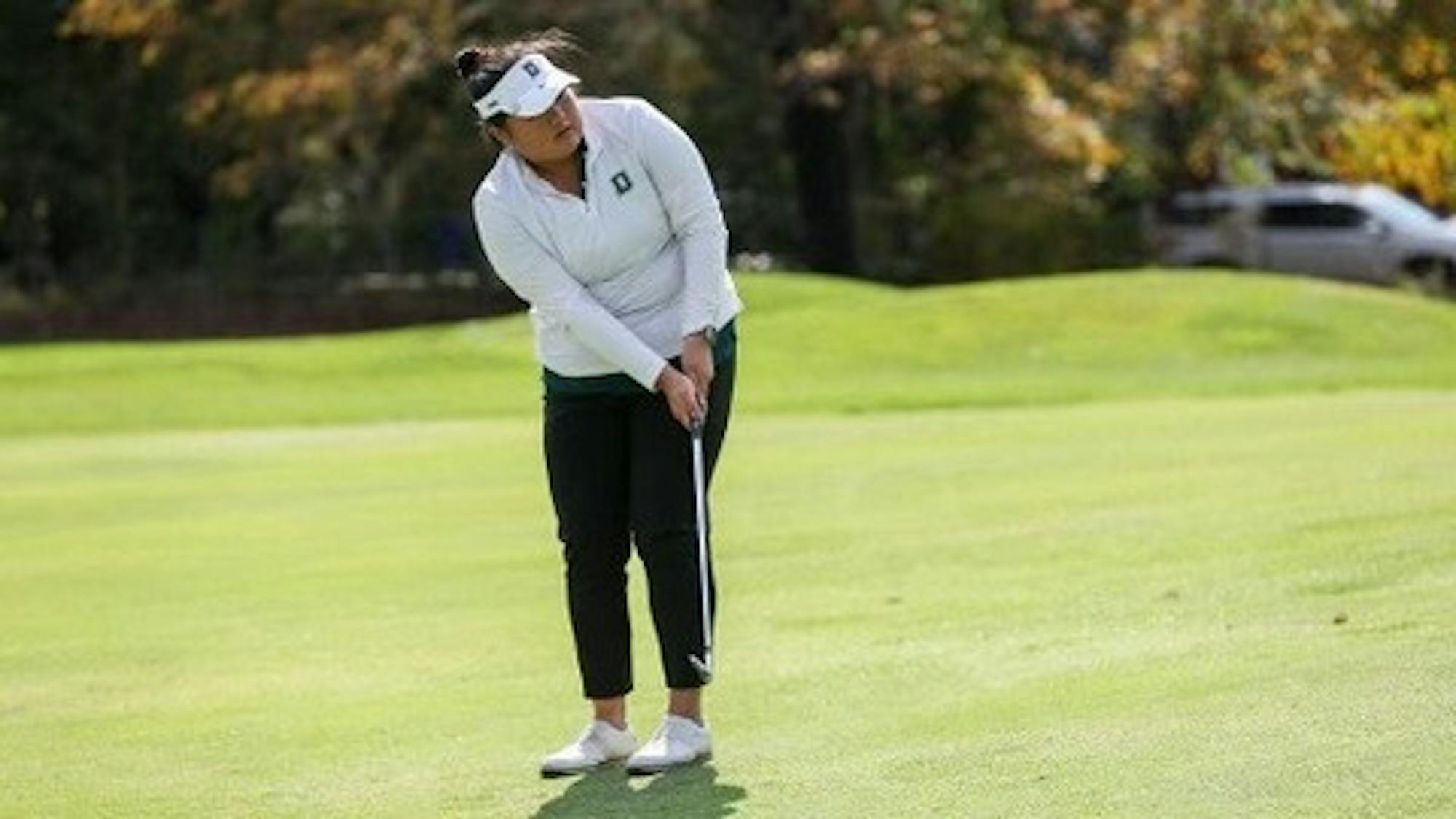Coming off consecutive second place finishes at the Princeton and Yale invitationals, the Dartmouth women’s golf team capped off a successful fall with their third straight runner up at the Quinnipiac Classic. Led by captain Katherine Sung ’24 (5th with rounds of 74,75, 77) and Penelope Tir ’24 (tied for 6th with rounds of 80,69,78), the team put together a complete performance. Late sparks came from Sophie Thai ’26 and Hope Hall ’26, who posted the tournament’s first (1-over 73) and second lowest (4-over 76) final round scores, respectively.
“The tournament went well,” Sung said. “The greens were a lot faster than what we were typically used to, so we had to adjust our game plan and strategy to account for that. But it was a really great tournament, [and] we [had] some of that healthy competition.”
Despite their relatively large size, Claire Xu ’25, attributes much of the team’s recent success to their collective care and drive they have for themselves and each other.
“I think our team is definitely like the biggest we’ve had, [in] my experience here,” Xu said. “But that being said, I think we do a really good job of encouraging one another and [agree] that whoever is best to represent Dartmouth should go.”
Part of this chemistry comes from intra-team diversity. A larger squad provides exposure to a number of strategic approaches, giving players the opportunity to widen the depth and scope of their own games.
“[It’s] definitely a lot of fun when you have a lot of players because you get to kind of play with a lot of different playing styles,” Xu said.
Yet, even as they reflect on their successes, the team still acknowledges areas for improvement.
“This last course that we played, the greens were really tough,” Thai said. “I think that’s where we lost a lot of our strokes.”
In recent years, golf has become a game increasingly defined by the breadth of analytics available to players and coaches. The team tracks their stats using an app called Circles, which allows them to log basic metrics (the number of fairways each player hits, the number of putts they take per hole), as well as access useful statistics (using the “strokes gained” measure, for instance, players can measure their shot by shot performance against competition). On a narrow course like The Farms Country Club, where the Classic was played, this method proved particularly useful in helping the team break down their performance.
“[There were] a lot of tight dog legs, which means that [the hole] went right or left instead of going straight out, Sung said. “And I think [it took] some time to adjust to that.”
Another collective point of emphasis for the team was “short game”—a collection of shots in golf that are typically played from 10-50 yards away from the hole. In general, a good short game opens up courses for big hitters: allowing them to capitalize on their power and escape tricky situations around the greens.
“[O]ur team consists of mainly longer hitters, [so] there's a lot of pressure put on our short game,” Thai said. “And I think that's one of our biggest areas of improvement.”
As they approach the winter training season, the team not only looks to build on their technique, but also seeks to strengthen the camaraderie that carried them through the fall.
“We’re probably going indoors now, until [February],” Katherine said. “So [our focus is] just keeping our games in tune while we're practicing, continuing to push each other to play our best, and just [continuing] to compete for the lineup.”
The team’s performance at Quinnipiac, however, has given them a quiet confidence for the spring. The Big Green will resume play Feb. 10 at the Columbia Classic held at Duran Golf Club in Melbourne, Florida.
[Our] goals have been to [compete] with the other Ivy League schools in the field, and also to [continue to] fight through rounds,” Sung added. “We are definitely in a good spot. Now [we] just have to clean up some edges.”




